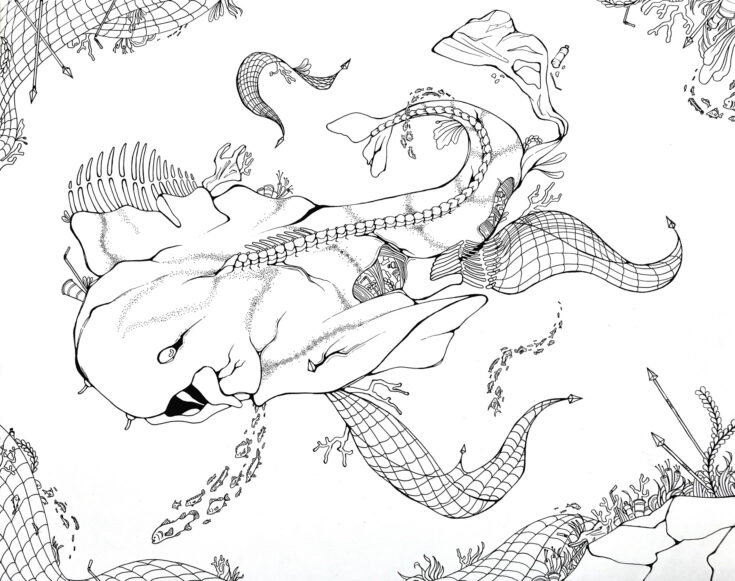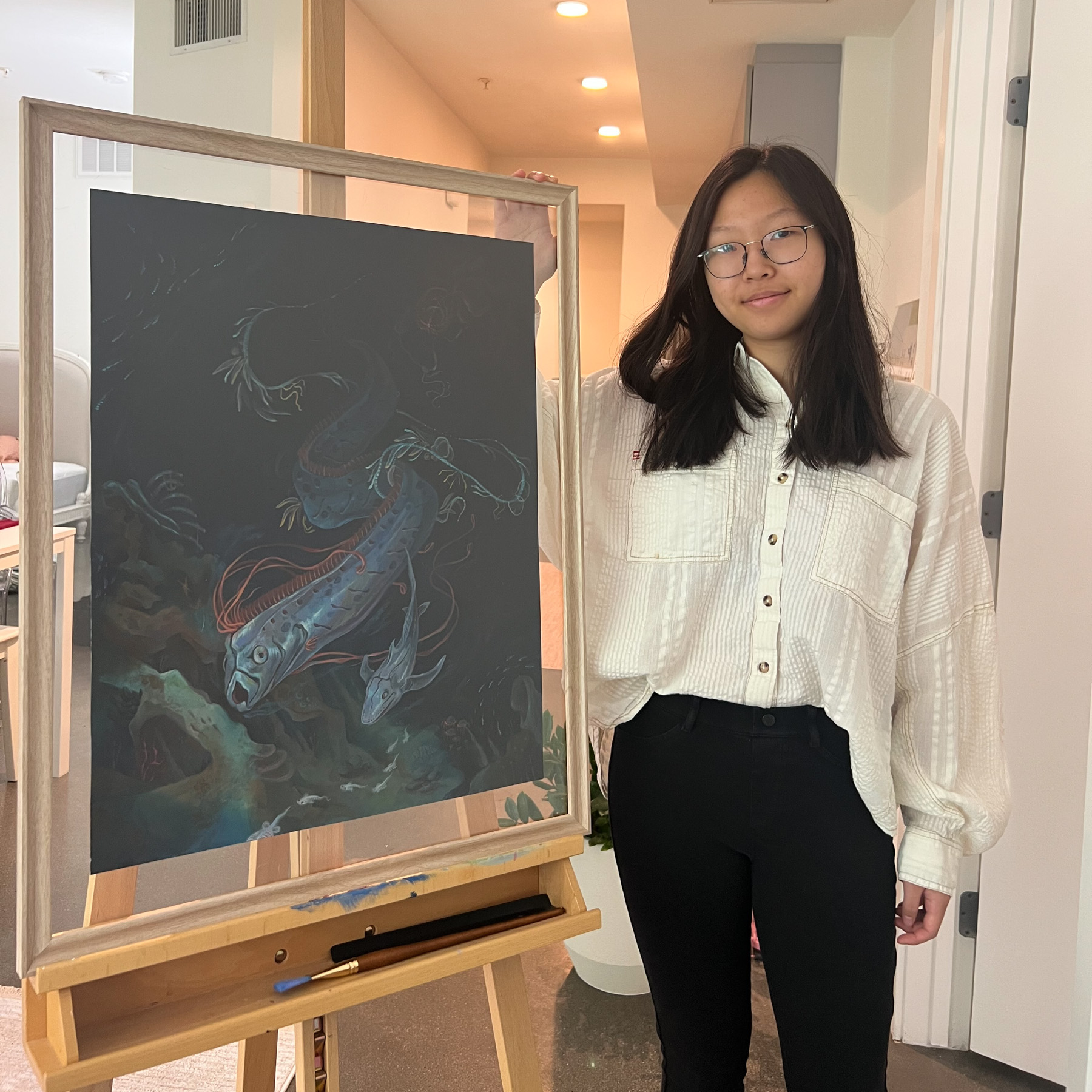
We hope you enjoyed meeting Claire, the first-place winner for ages 11-14 of our 2024 Science Without Borders® Challenge. It is my pleasure to now introduce you to the first-place winner in our 15-19 year-old age group, Eva Park!
Unlike most students who enter our art contest with a general interest in ocean conservation, Eva is determined to become a marine scientist. Her journey began with a fascination with the deep sea, which ultimately inspired her career aspirations. During my interview with Eva and her art teacher, Mr. Connor Thompson from Harvard-Westlake School in Studio City, California, we noted the irony that her fascination with the deep sea has now led her to win a contest focused on this very theme.
Mr. Thompson was particularly supportive and amazed by Eva’s artwork. He remarked, “I don’t think I’m biased because you’re my student. I really think your artwork is the best of all of them. I remember when Eva brought the piece in person – the real artwork – it took my breath away. The way she rendered the light and this idea that the light comes from a human observer, almost like a Baroque painting, like offstage lighting. It creates a human presence in the deep sea. The way she rendered it is exquisite, and I am so proud of her.”
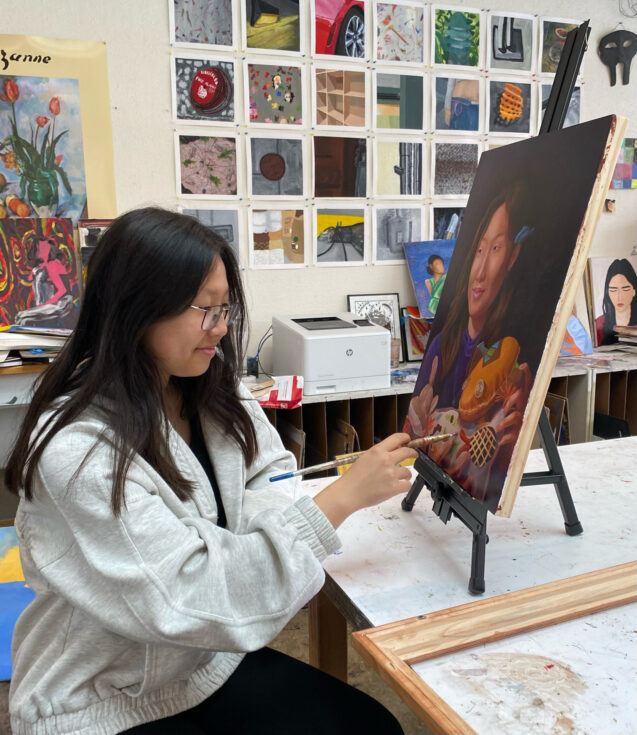
Eva is an inspiring example of the impact young individuals can have on promoting environmental stewardship. Her dedication and talent not only earned her first place but also highlighted the importance of raising awareness about the deep sea, an ecosystem that sparked her interest in marine science. We look forward to watching her passion and skills grow in her future endeavors.
Learn more from our conversation, as Eva shares insights into her motivation for entering the Science Without Borders® Challenge, the inspiration behind her art piece, and what she hopes viewers will take away from it. She also discusses the impact of participating in art contests on her personal growth and understanding of ocean conservation, along with her plans for the future, and advice for aspiring participants.
Q: Why did you enter the Science Without Borders® Challenge?
A: I was mostly motivated by the prompt about the deep sea. I was already looking to enter an art contest to hone my art and gain some experience, and since I liked the deep sea, I knew I had to enter.

Q: What inspired you to create your art piece?
A: When I prepare for an art contest, I always make sure to do research. For a contest like the Science Without Borders® Challenge, the theme was more niche and needed more digging until I felt I truly understood it. This definitely helped me better understand the deep sea and, along the way, discover more about ocean conservation. There were issues about conservation that I hadn’t given too much thought to before, like mining or agricultural run-off. The research I did for this contest was a great learning experience.
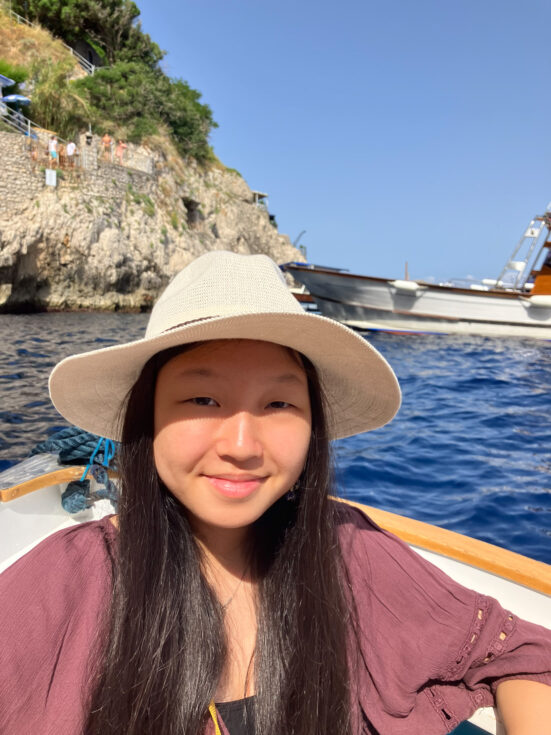
Q: What do you want people to get out of the artwork you created?
A: I wanted to convey the emotions I felt when I first discovered my passion for marine science. I’ve always lived on the coast, but the deep sea is what got me into the science of it, so I knew I wanted to really capture the essence of what drew me in. Running with that idea, I based my artwork around a few things I knew I definitely wanted to include—namely, a sense of mystery, discovery, and beauty.
I chose to convey the mystery and discovery through the lighting coming from the viewer’s perspective. I’m also a bit of a color enthusiast, so I showed the beauty of deep-sea life by amplifying their colors. Lastly, I chose the oarfish and the siphonophore as the focal points because they were some of the first deep-sea creatures I learned about. I felt they were a great blend of strange but intriguing and opened a lot of options for composition in the art.
Ultimately, I made this artwork not only to explore what the ocean means to me but also with the hopes that it may inspire others to become interested in the deep sea. I hope people see it and feel the same spark of curiosity and mystery that drew me into marine science.
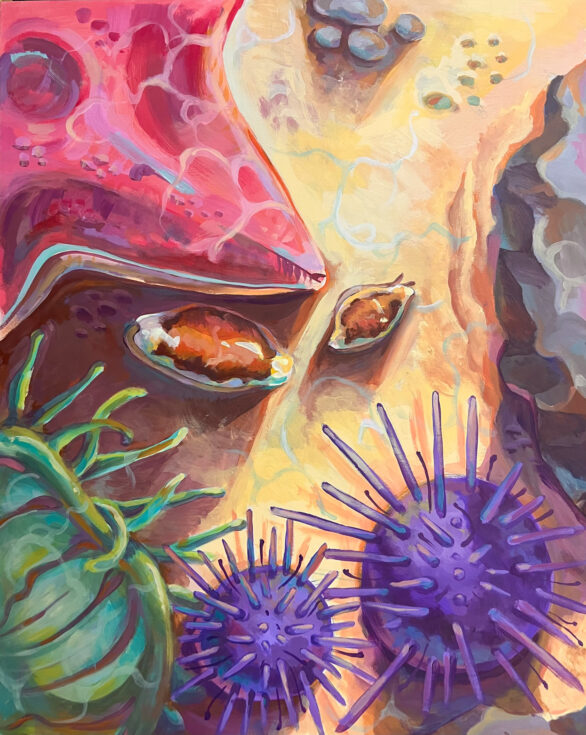
“Sunset in the Tide Pool” was inspired by Eva’s volunteer work at the Roundhouse Aquarium on the Manhattan Beach Pier where she is an exhibit interpreter. In her role, she helps manage the tidepool touch tank. Her artwork captures the sunset flickering over the aquarium’s tidepool, showcasing the beautiful native California species.
Q: How does participating in art contests like the Science Without Borders® Challenge contribute to your personal growth and understanding of ocean conservation?
A: This competition really reaffirmed my passion for marine science. I was already making artwork about the ocean, but putting so much focus into this particular piece made me think more about what the deep sea and conservation mean to me personally. It’s definitely sparked a stronger interest in conservation and solidified for me that I want to pursue marine science as a career.
Q: Why is the ocean important to you?
A: I’ve always lived on the coast, and the ocean has always been an integral part of my life. I want to help preserve not only the beaches I grew up on but also the ocean that supplies our oxygen, weather, and so many other aspects of our lives. I feel not only a personal connection to the ocean but also the sense that the ocean is vital to everyone.
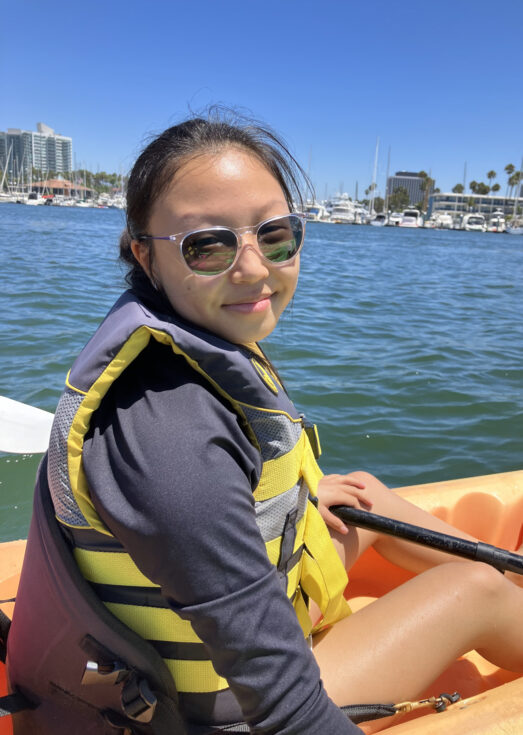
Q: What impact do you hope your artwork will have on viewers regarding raising awareness about the importance of preserving our ocean?
A: I hope that viewers will realize the multi-faceted nature of the ocean. It is not just cold and unforgiving but also warm and welcoming. It is not just a sparse expanse of land but also booming with life. It is all those things and so much more. In viewing my artwork, I hope people will realize these things and think more deeply about the wonderful things the ocean has to offer and has been offering to every person.
Q: What are your plans for the future? Do you plan to pursue a career in art or science?
A: I mostly plan to pursue a career in marine science. I will always do art, and I love it dearly, but I am more interested in the sciences. My current goals are to attend college for marine science, and my dream is to work as a scientist for NOAA.
Q: What advice would you give someone considering entering the Science Without Borders® Challenge?
A: I’d advise them to do a lot of research on the topic and find something about it they really feel a connection to. Part of the challenge is learning more about the topic, and researching can create a lot of inspiration. Additionally, having a personal connection to the topic, no matter how small it may seem, can help keep up motivation and bring out the best in an artwork.
